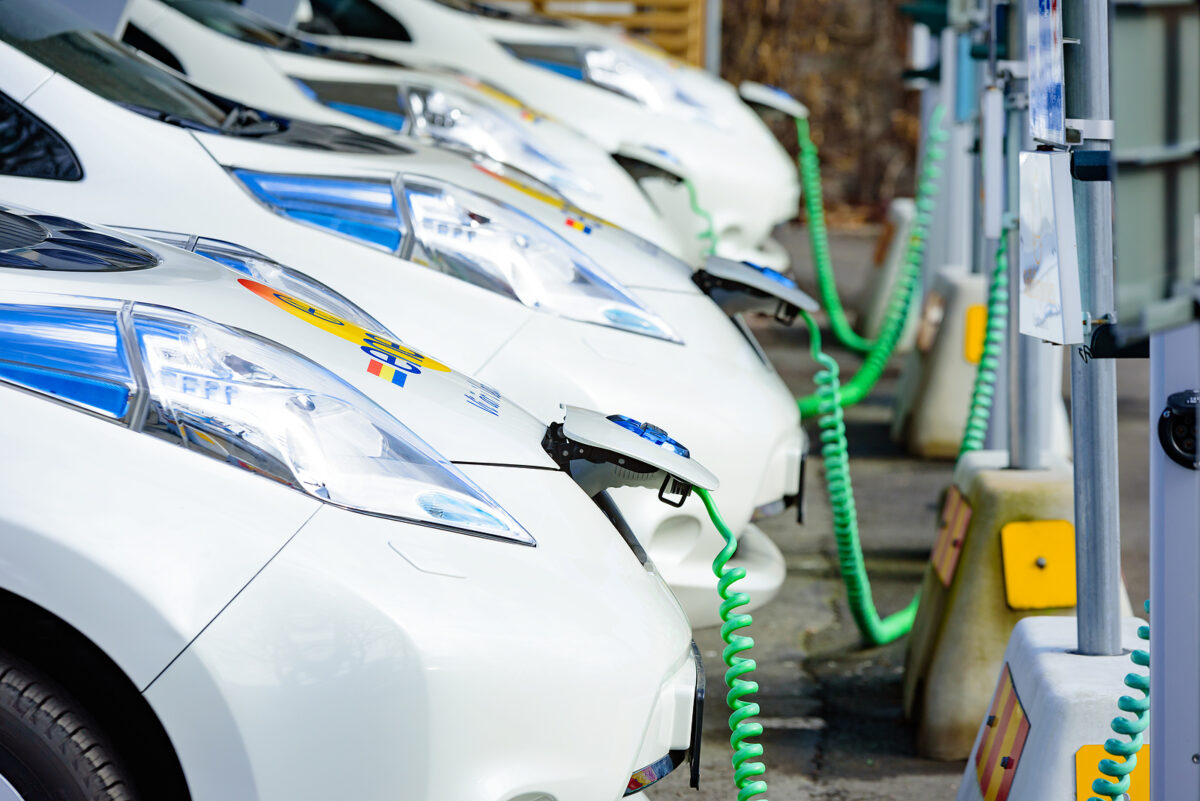Central and Eastern Europe plays an outsized role in powering Europe’s electric vehicle (EV) revolution.
Across the region, factories churn out EVs. Slovakia, for example, is the world’s largest per-capita car producer, with major manufacturers like Volkswagen and Kia pivoting to EV production.
Czechia produces Škoda and Hyundai EVs, while Poland is set to become a key player in battery manufacturing, home to Europe’s largest EV battery factory, opened last year by LG.
It will soon be joined by Volkswagen, which is constructing a cathode active material (CAM) production plant at Nysa in the southeast of the country. CAMs are high purity chemicals that define the output and application of different types of rechargeable lithium-ion batteries used in EVs and renewable energy storage.
Meanwhile, Serbia’s lithium deposits—a vital ingredient in EV batteries—are poised to make the country a linchpin in the green transition. In Bulgaria, a start-up is making EV charging networks scalable and more robust across the world. A Lithuanian start-up meanwhile is pioneering the short-term rental of EVs.
However, this remarkable industrial prowess sits in stark contrast to the region’s lacklustre EV charging network. The very countries helping to drive Europe’s EV supply chain remain stuck in neutral when it comes to their own infrastructure.
Indeed, CEE could be said to have stalled on the road to electrification. From Bratislava to Bucharest, the problem isn’t just sluggish EV adoption but the gaping lack of charging infrastructure—a chicken-and-egg dilemma that’s holding the region back.
The numbers don’t lie
The latest data from the European Automobile Manufacturers’ Association (ACEA) paints a stark picture.
Charging points in Europe are distributed with the kind of inequality that would make any economist wince. The Netherlands, a compact nation with a population of 17 million, boasts over 130,000 public chargers—more than a third of the EU total.
Contrast this with Poland, the largest CEE nation by population and area, which manages just 5,419 chargers. Romania, home of Dacia, which produces the popular Spring EV, fares even worse with a mere 2,754 charging points, despite being seven times larger (in area) than the Netherlands.
The per capita figures are poor too. The Netherlands offers one charger per 123 people, while Estonia (the best performing country in the region per capita) offers just one charger per 1,756 people.
These numbers aren’t just data; they’re an indictment of a serious problem. EV adoption rates correlate closely with infrastructure. Germany, with its robust charging network, saw battery electric vehicles (BEVs) take an 18 per cent share of its new car market in 2023. Poland, by contrast, lags at a paltry 2.4 per cent. Only Romania in Central and Eastern Europe tops a 10 per cent EV adoption rate.
Why Is CEE falling behind?
The first hurdle is financial. CEE countries generally have lower GDP per capita than their Western counterparts, which limits both government spending and consumer purchasing power.
Investing in public charging networks doesn’t come cheap—especially when governments are grappling with more immediate issues like healthcare and infrastructure upkeep. In Poland, for example, the average cost of installing a fast-charging station is roughly 40,000 euros, a significant outlay for local councils already stretched thin.
Meanwhile, private investors are cautious. Building charging stations in regions where EV ownership is low presents a classic first-mover risk. Why spend millions on a charger network when there’s no guarantee of demand?
CEE governments, while supportive of green transitions on paper, also often lack the concrete policies needed to spur EV growth. Subsidies for EV buyers in the region are meager compared to Western Europe. In Hungary, for instance, EV buyers can access grants of up to 7,000 euros—about half of what’s available in France. And while EU regulations mandate that all member states roll out charging points along main transport corridors, the pace of implementation in CEE remains slow.
Geography doesn’t help. Western Europe’s compact cities and dense populations make charging station placement relatively efficient.
In contrast, much of CEE is rural or semi-urban, which complicates infrastructure rollout. A single charger in the Polish countryside might service only a handful of vehicles, offering minimal return on investment.
The psychological barrier
Another factor holding back EV adoption—and by extension infrastructure—is the mindset of CEE consumers.
Cars in this part of Europe have long been seen as utilitarian, a means to an end. Many households still rely on aging internal combustion engine (ICE) vehicles, with the average car age in countries such as Bulgaria exceeding 15 years.
Moreover, concerns about what has been dubbed ‘range anxiety’ loom larger here.
A driver in Prague or Sofia isn’t just worried about whether they can find a charging point; they’re calculating whether that charger will even work.
Anecdotes abound of travelers stranded by broken or incompatible charging stations. Until reliability improves, scepticism will persist.
The accelerator of progress
That said, not all is bleak. Some CEE countries are beginning to tackle the infrastructure gap with gusto. Hungary, for example, has doubled its number of chargers in the last three years and recently announced plans to electrify all major highways by 2025.
Poland’s largest energy companies, including Orlen, have pledged to install thousands of chargers by the end of the decade.
EU funding is also playing a crucial role. Under the Alternative Fuels Infrastructure Regulation (AFIR), billions of euros are earmarked to help member states deploy charging points along Trans-European Transport Network corridors.
For CEE nations, this represents a vital lifeline, both financially and strategically.
Learning from the West
CEE can also take cues from Western Europe. In the Netherlands, public-private partnerships have been instrumental in creating one of the world’s densest charging networks.
Municipalities work with energy companies to identify optimal locations for chargers, ensuring both accessibility and profitability.
This collaborative model could be adapted to the unique needs of CEE, particularly in urban centers where demand is highest.
The transition to EVs in CEE isn’t just an environmental imperative—it’s an economic opportunity. Developing a robust charging network could attract investment, create jobs, and position the region as a hub for green mobility. But to get there, governments, businesses, and consumers must align their priorities.
CEE’s journey towards electrification won’t be as swift or seamless as its Western neighbours’, but the region has one advantage: time. By learning from the successes (and missteps) of others, CEE can leapfrog some of the early growing pains of EV adoption.
For now, though, the region’s EV ambitions remain stuck in neutral.







